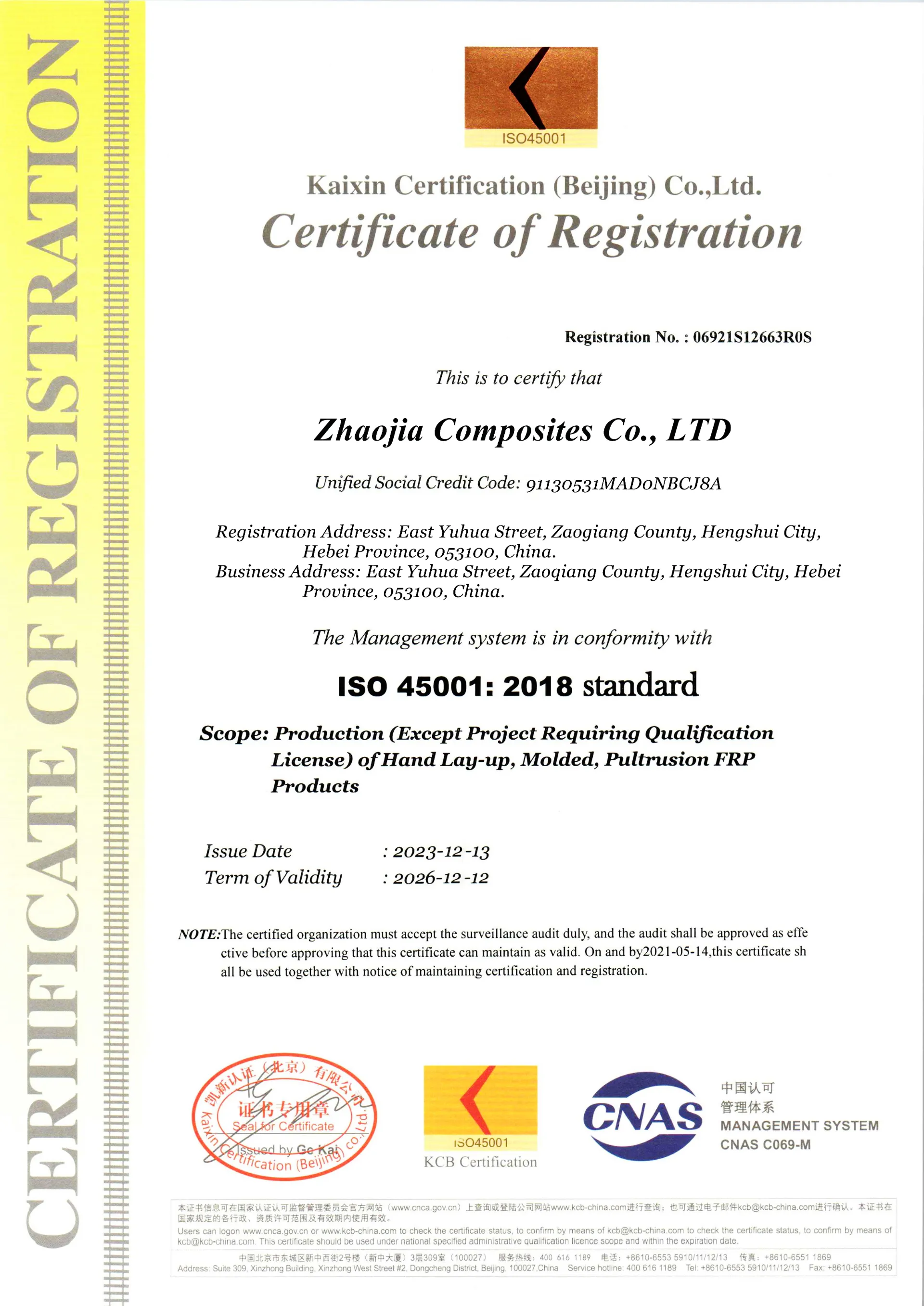loading...
- No. 9, Xingyuan South Street, Dongwaihuan Road, Zaoqiang County, Hengshui, Hebei, China
- admin@zjcomposites.com
- +86 15097380338
- Welcome to visit our website!
Innovations in Fiber Reinforced Plastic Grating for Enhanced Durability and Performance
Fiber Reinforced Plastic Grating A Comprehensive Overview
In recent years, the demand for durable and lightweight materials in various industrial applications has led to a significant increase in the use of Fiber Reinforced Plastic (FRP) grating. This innovative composite material combines the structural benefits of fiberglass with the lightweight characteristics of plastic, making it an ideal solution for a plethora of applications, ranging from construction to marine and chemical industries. This article aims to provide an in-depth understanding of FRP grating, its advantages, applications, and manufacturing process.
What is Fiber Reinforced Plastic Grating?
Fiber Reinforced Plastic grating is a composite material made from a polymer matrix reinforced with fibers, such as glass or carbon. The grating is designed with an open, lattice-like structure, allowing for excellent drainage while providing a safe walking surface. FRP grating is typically produced in various sizes and configurations, which can be tailored to meet specific load and environmental requirements.
Advantages of FRP Grating
1. Durability One of the primary advantages of FRP grating is its exceptional durability. It is resistant to corrosion, which makes it suitable for harsh environments, such as chemical processing plants and marine applications where traditional materials like steel would fail.
2. Lightweight Compared to metal grating, FRP is significantly lighter, which simplifies installation and reduces transportation costs. This characteristic is particularly advantageous in applications where weight restrictions are a concern.
3. Low Maintenance FRP grating requires minimal maintenance due to its resistance to chemical degradation, rust, and rot. This quality extends the service life of the product, making it a cost-effective choice in the long run.
4. Safety Most FRP gratings are designed with non-slip surfaces, providing enhanced safety for workers and pedestrians, which is vital in industrial settings. Additionally, the material is non-conductive, reducing the risk of electrical hazards.
5. Customizability FRP grating can be produced in various colors, sizes, and thicknesses, allowing customization to meet specific application requirements. This flexibility makes it suitable for a wide range of industries, from commercial to industrial.
Applications of FRP Grating
fibre reinforced plastic grating

FRP grating is utilized across numerous sectors due to its diverse benefits
- Chemical Industry Its resistance to corrosive substances makes FRP grating ideal for use in chemical processing facilities, storage areas, and waste treatment plants.
- Marine and Offshore In marine environments, where exposure to saltwater is prevalent, FRP grating provides a reliable solution for deck surfaces, walkways, and other offshore structures.
- Construction FRP grating is increasingly being used in construction projects, especially for walkways, platforms, and staircases in both commercial and industrial buildings.
- Wastewater Treatment Plants The ability of FRP to withstand harsh chemicals makes it a perfect fit for wastewater treatment facilities, where durability and safety are crucial.
- Power Plants With its lightweight nature and corrosion resistance, FRP grating is employed in various power generation facilities, including nuclear and geothermal power plants.
Manufacturing Process
The manufacturing of FRP grating involves multiple steps, beginning with the selection of the appropriate resin and reinforcing fibers. The process typically employs methods such as pultrusion, where continuous fibers are pulled through a resin bath and then shaped into grating panels, or moldering, which involves pouring resin mixed with fibers into molds to create custom shapes.
Once the gratings are formed, they undergo curing to solidify the polymer matrix. After curing, the products are cut, inspected for quality, and prepared for distribution.
Conclusion
Fiber Reinforced Plastic grating is proving to be a game-changer in various industries, thanks to its unique combination of durability, lightweight properties, and low maintenance requirements. As industries continue to seek sustainable and efficient solutions, FRP grating stands out as a reliable option, helping to meet modern engineering and environmental challenges. With ongoing advancements in materials technology, the future looks promising for FRP grating and its applications, ensuring that it will remain an essential material for years to come.
-
GRP Structures: The Future of Lightweight, High-Performance EngineeringNewsJun.20,2025
-
FRP Water Tank: High-Performance Storage for Corrosive and Clean Water SystemsNewsJun.20,2025
-
FRP Square Tube: The New Industry Standard for Chemical and Structural ApplicationsNewsJun.20,2025
-
FRP Pultruded Profiles: The Ultimate Choice for Lightweight Structural StrengthNewsJun.20,2025
-
FRP Handrails: The Safer, Smarter, and Stronger Choice for Modern InfrastructureNewsJun.20,2025
-
FRP Grating: The Smart Solution for Durable, Lightweight Industrial FlooringNewsJun.20,2025
-
Why Choose a Galvanized Water Tank for Your Storage NeedsNewsMay.21,2025
